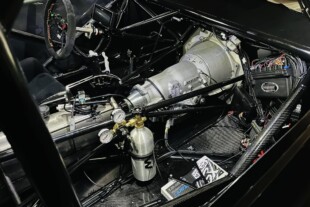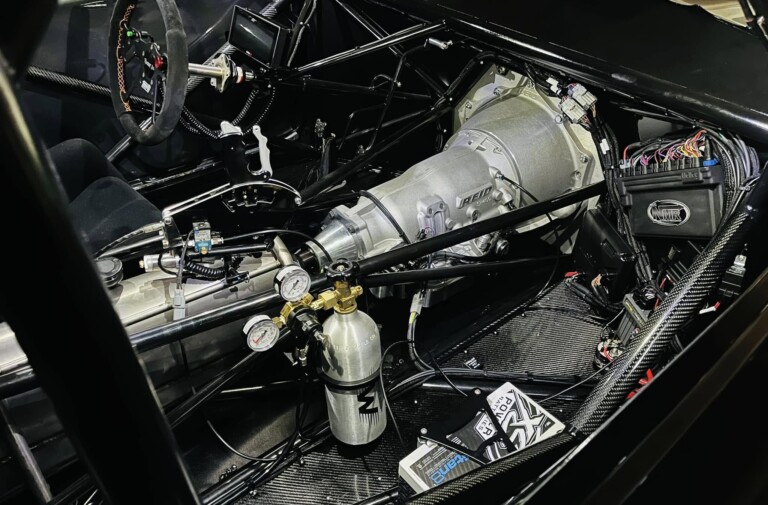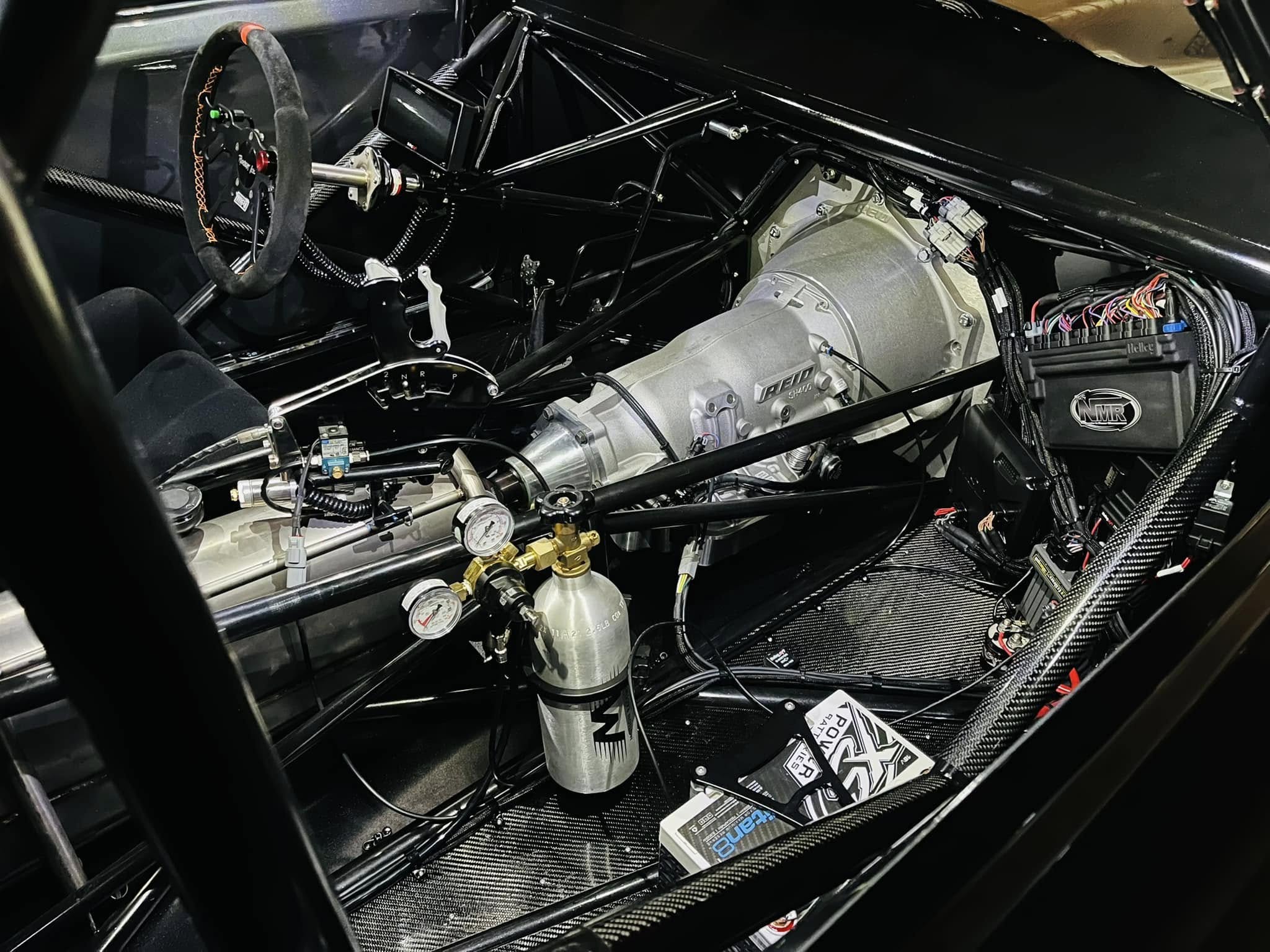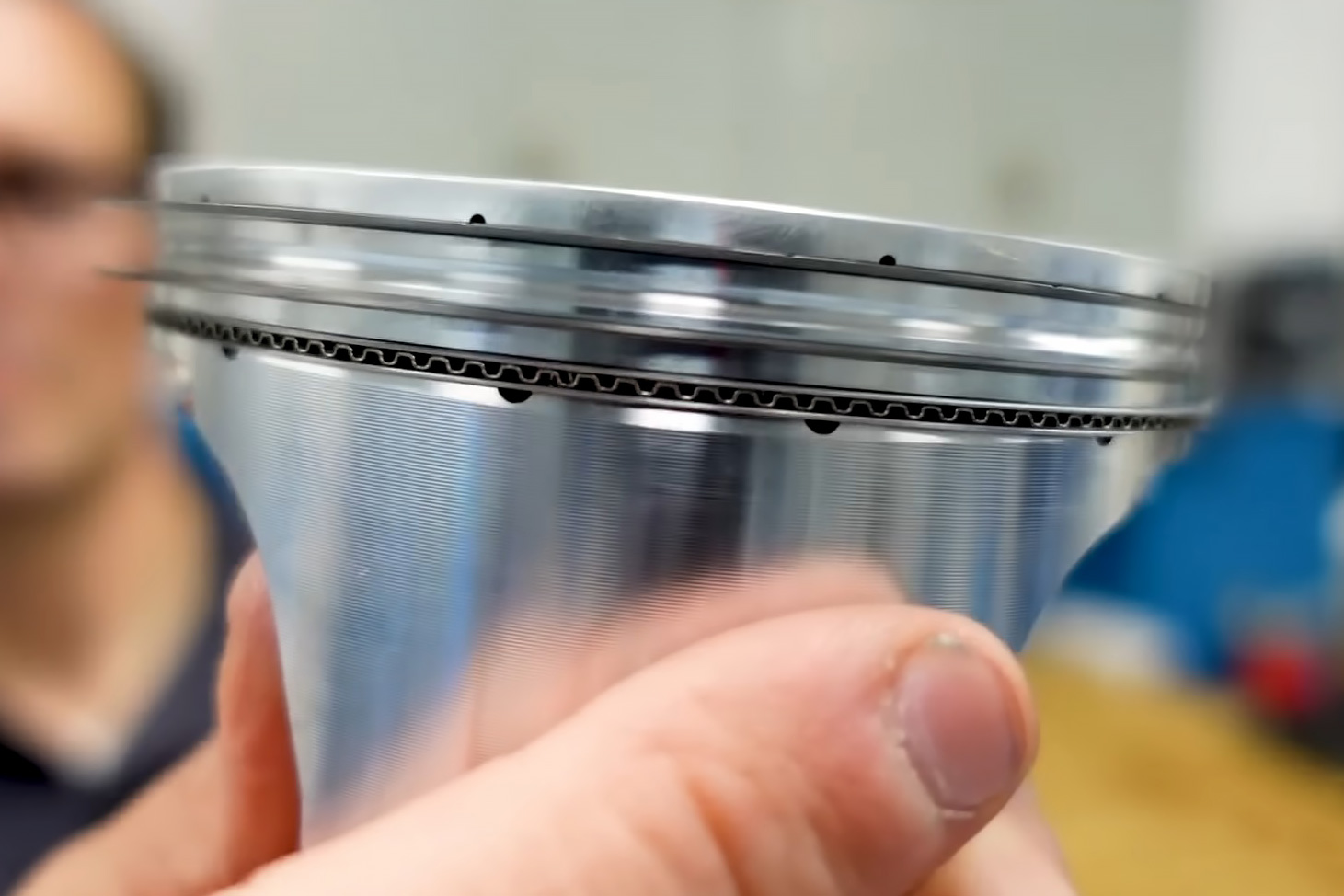We’ve brought you videos from Matt Mikka’s Warped Perception See Thru Engine series before (this one of the standard Otto four-cycle engine, and this one of the Wankel rotary), but this video is even better. I mean, any engine is better when you add a turbo and nitromethane, right?
Using the original four-stroke Briggs and Stratton cycle engine (as seen in the previous article linked above), the team has decided to add nitromethane as a fuel, along with a turbocharger. To top off the cool factor, it’s not just making noise, but is running on a home-made dynamometer.
While this isn’t the engine’s first taste of nitro, as previously it was run hard to the point of head gasket failure, that was a learning experience so that Mikka learned where the failure point was (sometimes you have to cross the line, to know where it is, right?). With a new cylinder head, and fresh oil, Mikka is setting out to do more than run it on 50-percent nitromethane this time. He wants to add a turbocharger.
If you’ve ever wanted to know how to build a dyno for your small engine, the section between 2:05 and 4:05 will be of particular interest for you. To set a baseline, Mikka runs the engine on the dyno with gasoline, and records 2.5 horsepower and 5 lb-ft of torque, at 2,650 rpm. He also smoked the clear cylinder head with the new-found load on the engine from the dyno.

As you can see, the clear see-through head didn’t hold up, once load from the dynamometer was added to the mix. And that was just on regular gasoline, at OEM performance levels.
After swapping on the stock cylinder head, the engine is re-baselined at 4.5 lb-ft and 3.0 horsepower at 3,600 rpm, which happens to be the engines rated-from-the-factory horsepower. A quick timing change and swap to the nitromethane, and it’s obvious right off the bat how much harder the engine is running.
After the calculations, the dyno shows the engine making 5.33 horsepower and 7 lb-ft of torque at 4,000 rpm. That’s a 56.2-percent increase in horsepower and 64.3-percent increase in torque, just from the nitromethane as a fuel.
After modifying the turbocharger off of a Mercedes SL65 to actually work (“work” may be the wrong term… how about “function”) with a 5-horsepower engine, and building a draw-through carburetor setup, Mikka gives his contraption a whirl. As you might expect from running a wildly-oversized turbocharger, the small engine struggled.
However, after a little tweaking, at least Mikka was able to get the turbocharger to make spooling noises, and the engine made the same 7 lb-ft of torque, but lower in the powerband, at only 3,650 rpm. Doing the math, that only leads to 4.86 horsepower. And that’s where Mikka accepts defeat – at least for this video. There is a follow up video, if you’re so inclined, dedicated to making that way-too-large-for-the-engine turbo work.
Goofy or not, it’s really a cool experiment showing the effect load has on an engine, how nitromethane as a fuel performs in a four-cycle engine, and highlighting the importance of not just slapping the biggest turbo you can find on an engine not-large-enough to support it. If Mikka ever decides filmmaking isn’t for him, we think he’d make a great science teacher.

Here’s Mikka’s home-brewed engine dyno. This is the peak of the naturally aspirated nitromethane pull registering 7 lb-ft of torque at 4,000 rpm, which calculates out to 5.33 horsepower. A significant increase over the baseline gasoline pull.


















